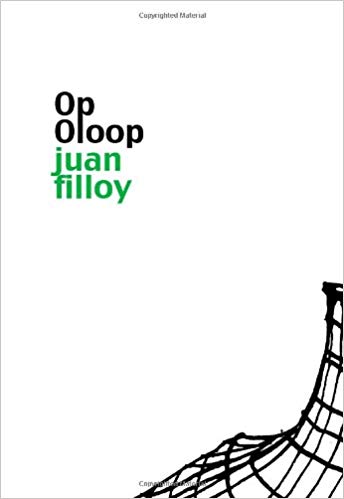When Op Oloop was first published, in 1934, two things happened: first, the book earned the praise of Sigmund Freud, who sent Filloy a letter of congratulations on his accomplishment; and second, it was eventually banned by the Buenos Aires public administration, which condemned it as “pornographic and offensive to morals and good habits.”
“As has already been stated,” Op Oloop reminds us, “some people’s brains border their anal regions.”
Fittingly, our hero is happily settled in the anal stage; order and self-control motivate his behavior. Part Pnin and part Werther, Op Oloop’s fragile sanity is held together by a “lucid imbalance.” A professional statistician, he processes the world with academic rigor, yet colors this view with a bizarre brand of romanticism. “Using censuses, diagrams, and rows and columns of figures, the static history of humanity can be described and synthesized,” Op Oloop rhapsodizes. “Plywood was my point of departure.” (He first found his calling working at the Aabo Timber Emporium Inspection Office.)
Like a journal or sanatorium logbook, the novel is divided into seventeen blocks of time, with entries increasing in frequency (4:50 a.m., 5:10 a.m., 5:12 a.m.) in tandem with Op Oloop’s (possibly syphilitic) decline. As sanity teeters, reality follows, and one of the longest passages in the book—a thirteen-page dialogue between Op Oloop and Franziska—takes the form of a telepathic conversation while the statistician walks though the Botanical Gardens. Thankfully, the reader’s not alone in navigating this territory: an omniscient narrator provides CliffsNotes in the form of psychoanalysis and scientific observation. This setup prevents the novel from spiraling off into total chaos, but also has the hilarious (and oddly postmodern) effect of subjecting Op Oloop to his own taxonomic worldview.
Op Oloop’s meltdown isn’t triggered just by the traffic accident that throws him into a catatonic stupor, but by the psychic burdens of falling in love. Prior to this, sex and love were synonymous and quantifiable, a stance he explains at a banquet in honor of his thousandth visit to a brothel:
My erotic punctuality became an imperative mathematical desire. I possessed women so that I might possess their statistics. I don’t know what strange allure I found by assimilating sex and numbers, whereby the displaced pleasure of copulation was recovered in the joy of computation.
When sex and statistics disentangle themselves in the person of Franziska, Op Oloop starts to lose it. “Love,” he claims, “has plotted the definitive...
You have reached your article limit
Sign up for a digital subscription and continue reading all new issues, plus our entire archives, for just $1.50/month.
Already a subscriber? Sign in





